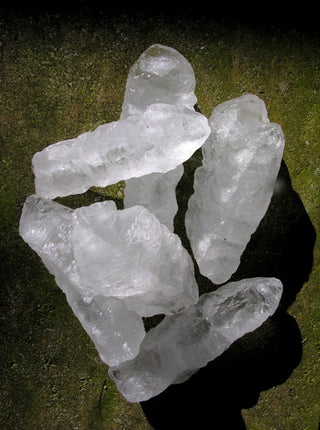- There are both natural volcanic sources of alum (potash alum or potassium alum) and synthetic factory produced alums (ammonium alum, potassium alum). Both are used as deodorant ingredients. Another ingredient, aluminium chlorohydrate is used to fabricate antiperspirants, however, we’re focusing on alum deodorants.
- Deodorants remain largely on the outside of the skin surface whereas antiperspirants are absorbed into the sweat glands, blocking the exit of sweat. This means that antiperspirants cross the skin barrier into the body. We use deodorants which work by killing the odour causing microbes on the outside of the body.

- Anecdotal differences are reported in the effectiveness between synthetic and natural alums in deodorizing.
- Most of our exposure to aluminium is through the bio-concentration of aluminium compounds in food, but aluminium is also present in the air and our water. Nearly all the studies on the effects of aluminium exposure on humans via alum compounds relate to antiperspirants such as aluminium chlorohydrate (not the natural potassium alum deodorant), however, even when testing synthetic aluminium chlorohydrate, studies show that aluminium absorption through the skin layer is insignificant compared to general daily exposure, especially from foods.
- Scares about aluminium exposure originate from certain IV fluid patients who received high concentrations of aluminium in IV fluids and gold miners who inhaled aluminium metal dust. However the routes of entry are different to the dermal entry of alum antiperspirant use and different in exposure scale. Alum deodorants give less exposure still because they remain on the outside of the skin.
- Many deodorants, especially many liquid deodorants contain alum plus a cocktail of other synthetic chemicals – safety studies rarely take account of this complicated chemistry and individually and many common ingredients used in chemical deodorants are linked to cancer and are classified as neurotoxins. There are huge gaps in the data on the way different forms of alum, different entry routes, and different levels of exposure effect people.
- Natural volcanic alum is an earth grown crystal, the molecules are very large, for this reason and due to the negative charge the molecules can not pass through the skin barrier.
- Natural alum is a very planet friendly alum, because it has been made already by natural seismic and geothermal processes and does not require further processing. Assium alum has been used for thousand years by many different cultures in all sorts of industries. Natural alum is considered safe in these societies where it is not linked to Alzheimer’s disease, breast cancer nor other Western diseases. It is even added to drinking water to help purify the water in India and across other parts of the world.


